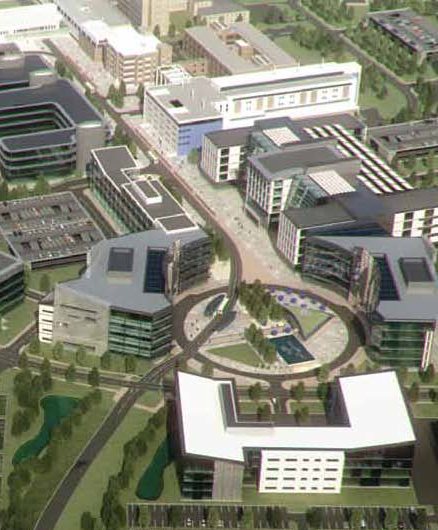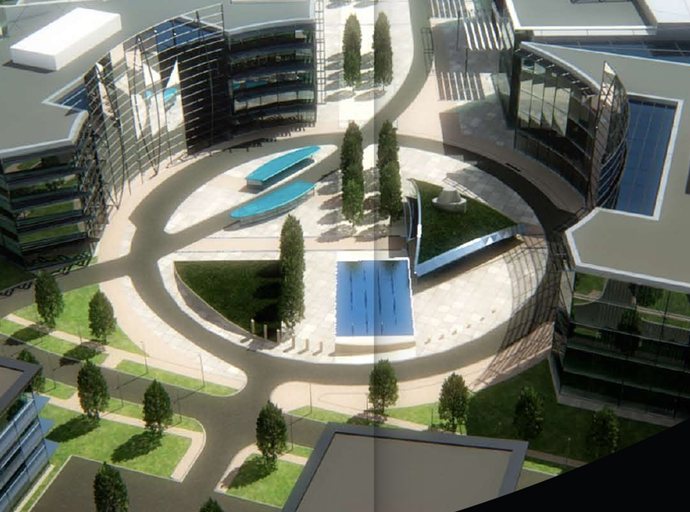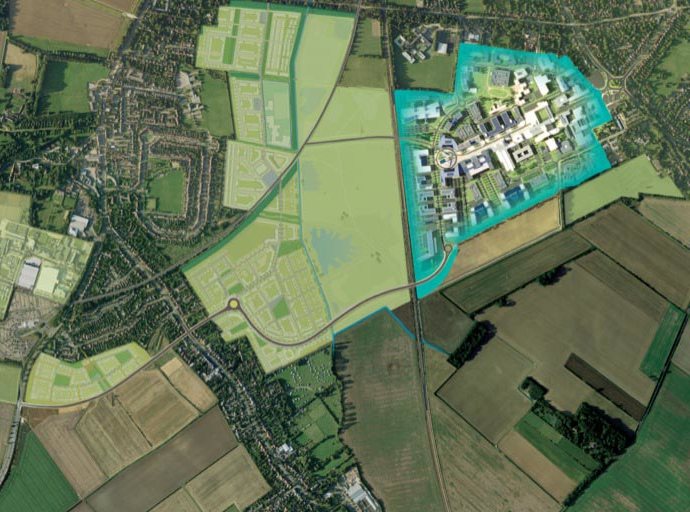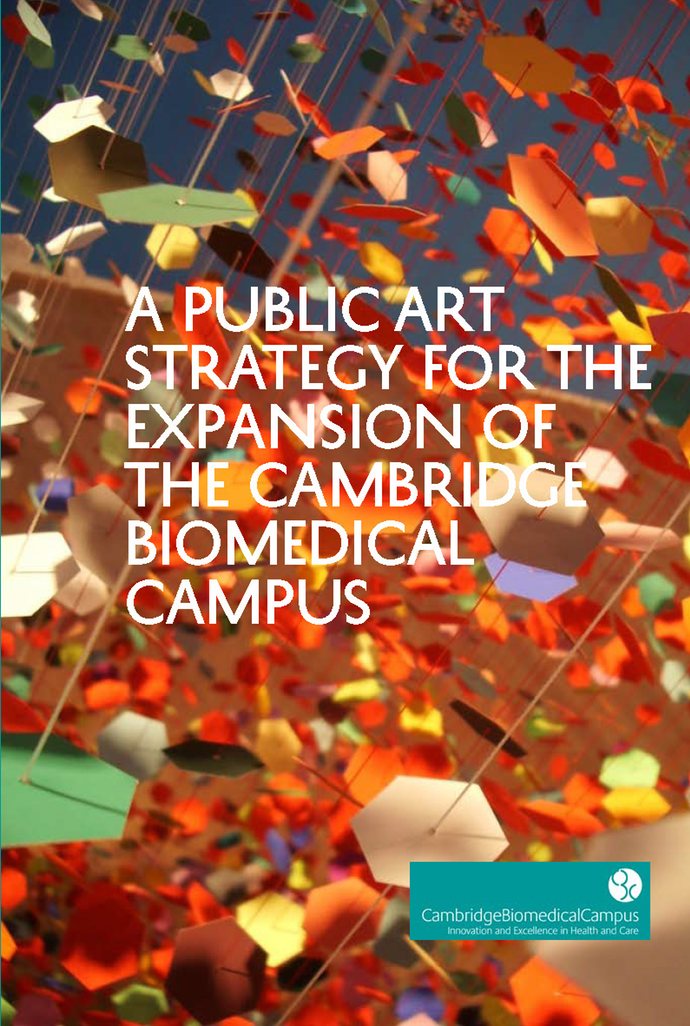




Cambridge Biomedical Campus is one of the worlds’ leading healthcare and biomedical research centres, a 70 acre campus; that is home to 18,000 patients, doctors, nurses, scientists, support staff and visitors. In 1999, Addenbrooke’s Hospital (now part of Cambridge University Hospitals NHS Foundation Trust), the University of Cambridge and the Medical Research Council, created a masterplan for the expansion of the hospital site called the 2020 Vision. This included the development of a further 90 acres to enhance existing on-site activities as well creating space for commercial organisations. Joining the multitude of campus organisations will be the New Papworth Hospital and Astra Zeneca’s new Global R&D Centre and Corporate Headquarters.
Futurecity wrote the campus expansion land Public Art Strategy. Approved by Cambridge City Council in March 2011, the Strategy is delivering a landmark art and architecture project to design the campus’ new 20,000sq.m. Circus and Piazza central public realm, alongside a major campus wide artist in residency programme, that will see international artists working alongside science and healthcare professionals from 2015-2020.
The Green and the Gardens, 2019
Artist Ryan Gander won an international art competition to lead the public realm design. His radical approach, which combined landscape, sculpture, events and street furniture, flipped the entire public realm from grey to green; a poetic new space for healing, escape, time out, recreation and exchange.
The Green and the Gardens transforms the campus’s public realm into a green heart for the campus, creating a bespoke design for the planting, furniture, lighting and integrated sculptural elements: coloured tents made of polyurethane resin that glow at night, an open gateway, a stile, and a community noticeboard for the whole campus to use and follow.
Home in the Service of Science, 2016
Artists Publicworks and 30Bird were the first CBC artists-in-residence, working through 2016 alongside staff at the Medical Research Councils Laboratory of Molecular Biology, which opened on the campus in 2013 to house 440 scientists and 160 support staff. The artists spent many hours in the labs with scientists, researchers, cleaners and admin staff, listening, challenging, annoying and laughing. Home in the Service of Science culminated in October 2016 with a series of public performance events with a cast of scientists, actors, musicians and dancers. They performed experimental, immersive events for diverse audiences to explore the LMB’s vital work and reflect on its relationship to everyday life.
